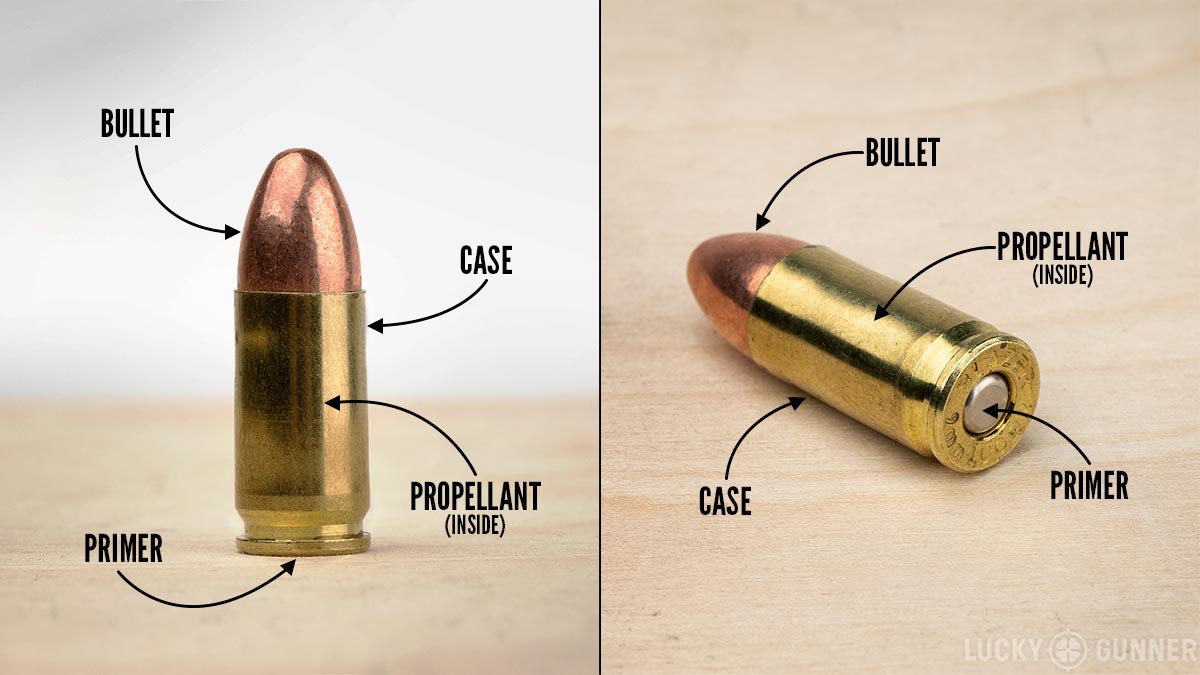An Unbiased View of Ammunition Pro Llc
An Unbiased View of Ammunition Pro Llc
Blog Article
Ammunition Pro Llc - Questions
Table of ContentsThe smart Trick of Ammunition Pro Llc That Nobody is DiscussingThe Buzz on Ammunition Pro LlcEverything about Ammunition Pro LlcAmmunition Pro Llc - TruthsGetting The Ammunition Pro Llc To Work
The standard parts of ammo are the same for rifle, pistol, and shotgun ammunition. Today we're looking at the what the basic components of ammunition are and how they function with each other to fire a round.The bullet is seated in the open end of the case. When you fire a bullet out of a semi-auto gun, the gun's extractor lifts the situation from the firing chamber and it flies out of the weapon.
A gun's firing pin strikes a cartridge's primer. The primer is located in the rim of the case of a rimfire cartridge.
Ammunition Pro Llc Can Be Fun For Everyone
The 2 typical kinds of primers in centerfire cartridges are Berdan and Fighter guides. Gunpowder alongside the case that generally includes it. Powder, likewise referred to as propellant or gunpowder, is a fast-burning chemical mixture. The primer surge ignites it. It is normally a combination of saltpeter, charcoal, and sulfur.

We call the projectiles for shotshells, which we discharge through shotguns, slugs and shot. A slug is one solid piece, normally constructed of lead. Shot is a group of pellets made out of lead, steel, bismuth, or tungsten alloy. Shot pellets can be available in different dimensions and quantities. Currently that you have a basic understanding of the fundamental parts of ammunition, you can really feel a little bit extra confident in exactly how your gun and ammo feature!.
Ammunition Pro Llc Fundamentals Explained
Keep up with Special Deals, Advancement Notice of Sales, and Store Occasions
Fun reality: Grains are utilized to explain the mass of a bullet since right back in the early days of firearms, it was a dispenser's device of measurement, and a common denominator was needed to figure out exactly how much lead to make use of to make cast lead bullets (Online Ammunition Store). 'Grains' as a system of action for weight goes all the means back to old times, and stands for the weight of a grain of wheat

(https://www.storeboard.com/ammunitionprollc1)For reference, the weight of a paper clip is around 16 gr. We understand that grains are a measure of mass, and more = much heavier, and heavy is good? Yes, hefty is excellent, but mass of the projectile isn't the only thing you need to take into consideration when picking a round for your gun.
The smart Trick of Ammunition Pro Llc That Nobody is Talking About
This spin is produced by grooves cut or inculcated the interior of the barrel, which are referred to as 'rifling'. Fun fact, this is the beginning of the term "Rifle" ex-spouse. A rifled firearm vs. smoothbore firearm. The result this spin carries projectiles is a supporting one the bullet turning keeps the nose aimed directly, in the exact same method that a flawlessly spiraled football toss is going to be far more secure and precise in flight than an ugly duck, end over end toss.
Just how does this connect to grain weight? Envision you're on one of those playground slide carousels, the ones with bars you hold on to while it spins.
The exact same result occurs with bullets. The much heavier the projectile, the more result a quicker spin will certainly have on it.
Ammunition Pro Llc Can Be Fun For Anyone
But there's another aspect that we have to take into consideration when choosing a grain weight for our ammunition. As hinted at above, bullet velocity, or the speed of the projectile, is a major aspect when figuring out the best grain weight projectile to use. Speed is affected by a few significant factors, consisting of the kind and amount of propellant (gunpowder), barrel size, and bullet weight.

The most typical grain weight rounds for 9x19mm cartridges are 115gr and 124gr. These are usually lead core, completely jacketed (FMJ) rounds. Both of these grain weight cartridges will carry out well in factory 9mm handguns, to normal handgun distances (as much as 50 yards). 115 grain rounds are the most usual (and therefore least expensive).
Report this page